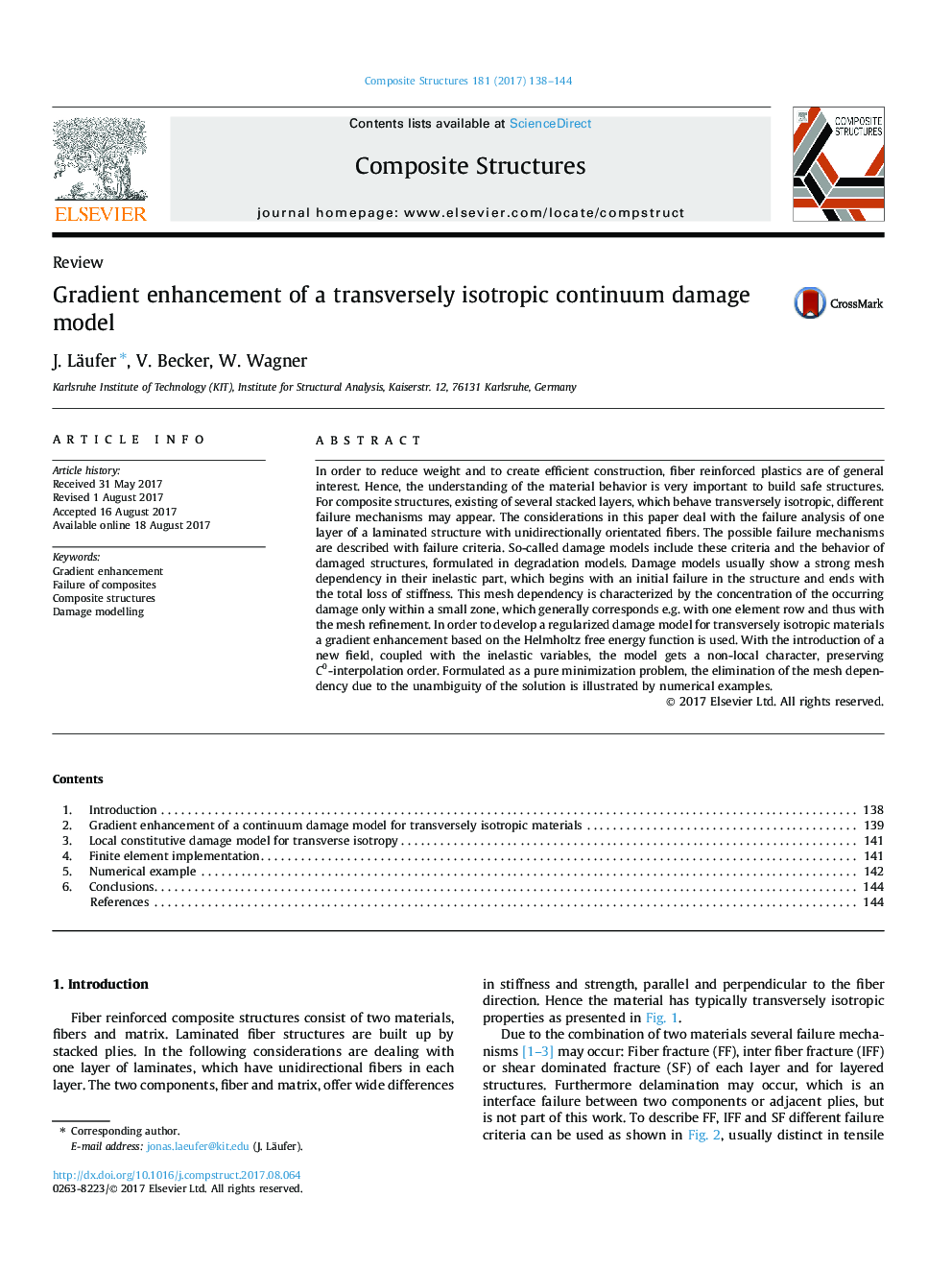| Article ID | Journal | Published Year | Pages | File Type |
|---|---|---|---|---|
| 4917785 | Composite Structures | 2017 | 7 Pages |
Abstract
In order to reduce weight and to create efficient construction, fiber reinforced plastics are of general interest. Hence, the understanding of the material behavior is very important to build safe structures. For composite structures, existing of several stacked layers, which behave transversely isotropic, different failure mechanisms may appear. The considerations in this paper deal with the failure analysis of one layer of a laminated structure with unidirectionally orientated fibers. The possible failure mechanisms are described with failure criteria. So-called damage models include these criteria and the behavior of damaged structures, formulated in degradation models. Damage models usually show a strong mesh dependency in their inelastic part, which begins with an initial failure in the structure and ends with the total loss of stiffness. This mesh dependency is characterized by the concentration of the occurring damage only within a small zone, which generally corresponds e.g. with one element row and thus with the mesh refinement. In order to develop a regularized damage model for transversely isotropic materials a gradient enhancement based on the Helmholtz free energy function is used. With the introduction of a new field, coupled with the inelastic variables, the model gets a non-local character, preserving C0-interpolation order. Formulated as a pure minimization problem, the elimination of the mesh dependency due to the unambiguity of the solution is illustrated by numerical examples.
Keywords
Related Topics
Physical Sciences and Engineering
Engineering
Civil and Structural Engineering
Authors
J. Läufer, V. Becker, W. Wagner,
